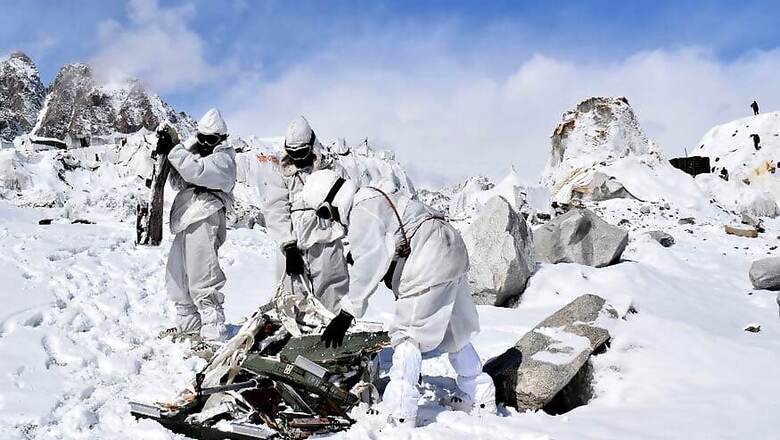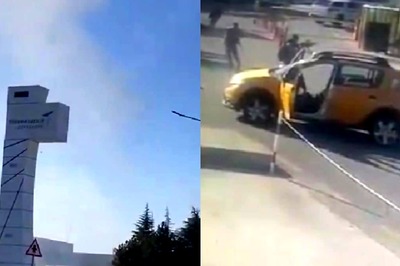
views
There are a thousand of ways to die at Siachen Glacier – arguably the world’s toughest battlefield. One could freeze to death, or suffocate under an avalanche, or fall into a crevasse. So, what does a doctor need to do to save lives there?
Everything they can, and then a little bit more, says Lieutenant General BNBM Prasad, who retired as Director General of Armed Forces Hospital Services. “You need a tremendous amount of luck…but doctors also need to be fitter than the fittest solider to be able to help,” he said.
Four soldiers and two civilian porters were killed on Monday, after an avalanche hit the Siachen Glacier in Ladakh. An Indian army spokesperson said that eight soldiers were patrolling at a height of 5,485 metres (17,995 feet) in the northern part of the glacier when they were buried under the snowslide.
A few decades ago, in the 1980s, Prasad had a similar challenge. A group of eight soldiers were similarly trapped under an avalanche. “You can’t predict where an avalanche is going to strike. It is usually in the months of December and January…when it’s raining in Delhi, you know heavy snowfall has taken place at Kashmir,” he said.
Prasad recalled how he walked over 10 kilometers – choppers can simply not land in the terrain – before he even reached the approximate location of where the soldiers were trapped. “Doctors can just as easily become victims,” he said.
The hardest part in such a rescue operation, he said, was to get one’s bearings right and be able to locate the buried soldiers. “It is next to impossible…you don’t know where the people might be trapped. And there are different factors that impact whether or not you can successfully save someone,” he said, adding that the nature of the snow, where it was loose and allowed oxygen to pass through, the fitness level of those who were trapped, and the speed with which they could be rescued and resuscitated all impacted the chances of survival. “In the 1980s, there were 8 and they were trapped under a building. We were able to pull out six…it took another 20 days to recover the other two. I was able to rescue 6 people. Two died,” he added.
The actual rescue, a simple process of resuscitation which any trained person can do, is relatively simple and Prasad added that once rescued and resuscitated, they were immediately carried to an area where they could be flown out, in a chopper, to a hospital. “There is little a doctor can do in such a situation,” he added.
Avalanches form a small part of what a doctor has to deal with. Oxygen deficiency can lead to cerebral hypoxia, where the brain doesn’t have enough oxygen and can lead to death. Acute mountain sickness is a constant risk, as is high altitude pulmonary oedema – which remains a major cause of death at high altitudes worldwide. Exposure to solar radiation can further multiply health risks, while living in the hostile region for days, at end, often leads to depression among soldiers, he added.
“The doctor has to be prepared for all of this, and has to be fitter than any soldier to ensure that they can treat the soldier,” he said, adding that fitness is a prime criteria for the Indian army while sending doctors to the region. “I was there for 28 months, I was used to climbing these mountains. But I came across many healthy soldiers developing these problems.
In an avalanche, he said, “it is a matter of time” that a person is rescued. But whether the person is rescued alive or not is not always in the hands of the doctor “even if you have the best team”, he added.
“These are natural calamities and this area is more prone to it. Avalanches are taking place all the time, but these places aren’t usually inhabited,” he said.
Neither soldiers, nor their doctors, have that choice.
















Comments
0 comment